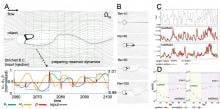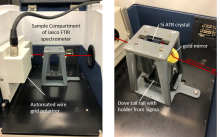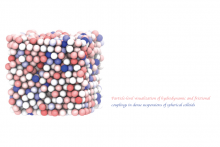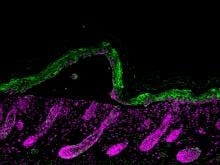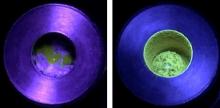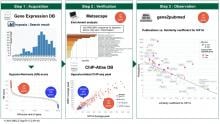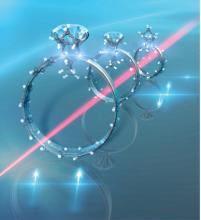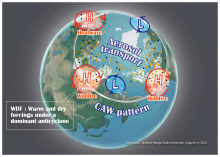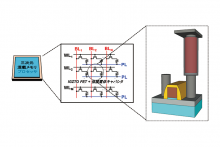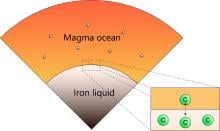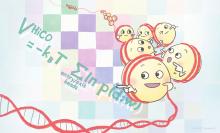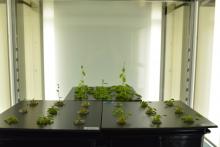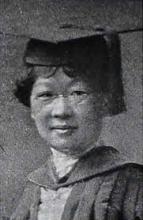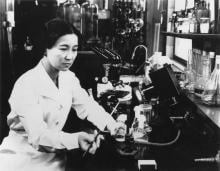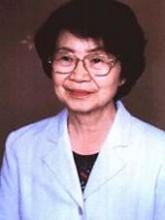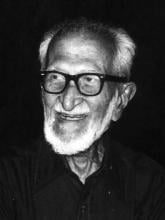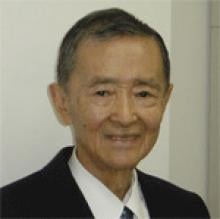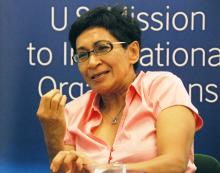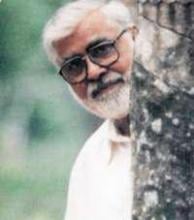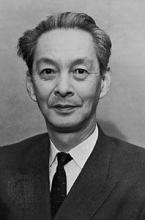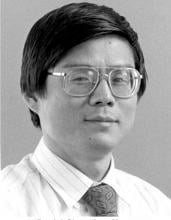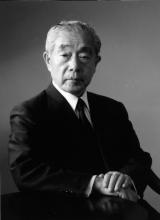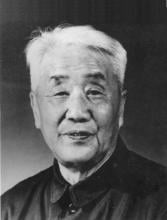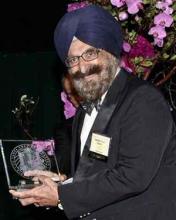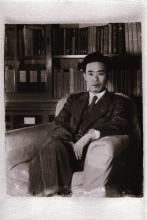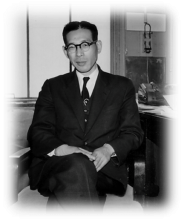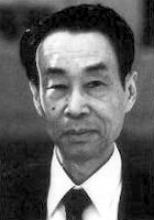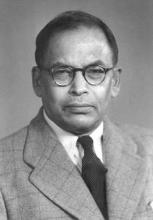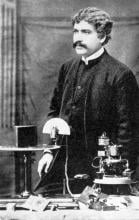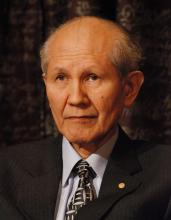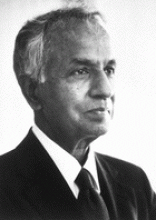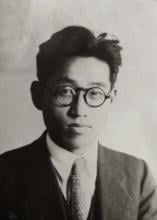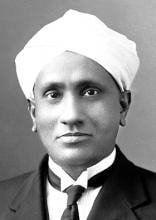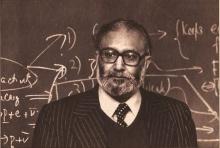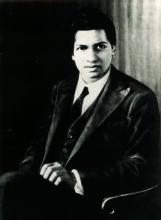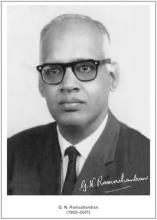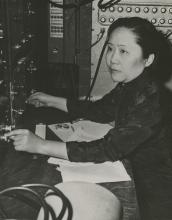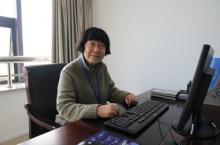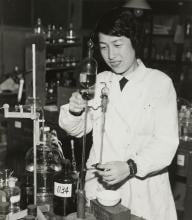Science
News
08 Jul 2021
Molecular evolution of enzyme beyond recruit hypothesis
●First determination of crystal structures of aconitase X by X-ray crystallographic analysis
●Evidence of a common ancestor of aconitase superfamily, appearing before the previously proposed one
●Evolutional insight of requirement of complicated metabolic pathways in primordial cell
07 Jul 2021
We have developed a groundbreaking chemical reaction using an N-heterocyclic carbene catalyst that has a low environmental impact to cleave the bond between the benzene ring of an aryl halide and a halogen atom to generate an aryl radical. Since aryl radicals can thus be easily generated from aryl halides that are widely used in organic synthesis, this is expected to be a powerful technology for precisely synthesizing medical and agricultural drugs and chemical materials.
07 Jul 2021
For a timely respond to the government-level strategies on K-Semiconductor development, DGIST launched the Institute of Next-generation Semiconductor convergence Technology(INST).
06 Jul 2021
Researchers have used the latest wireless technology to develop a new radio receiver for astronomy. The receiver is capable of capturing radio waves at frequencies over a range several times wider than conventional ones, and can detect radio waves emitted by many types of molecules in space at once. This is expected to enable significant progresses in the study of the evolution of the Universe and the mechanisms of star and planet formation.
05 Jul 2021
Osaka Prefecture University develops a method to design and control the path of electron flow in a polycrystalline material. Using epitaxial growth approach, researchers address the electrical conductivity problem of thin film materials by realizing a highly conductive in-plane orientation of a metal-organic framework. Furthermore, they show that it is possible to fabricate oriented thin film patterns by integration with UV lithography technology.
05 Jul 2021
Scientists used digital circuitry to manipulate and store label-free matters in order to study their unique characteristics
30 Jun 2021
Researchers from The University of Tokyo Institute of Industrial Science and Fudan University experimentally interrogate a phenomenon that bridges diverse fields of science and engineering
25 Jun 2021
- 7 Graduate Students in 3 Departments including Department of Emerging Materials Science
- Entitled to Support Needed for Conducting Independent Research for 2 Years
25 Jun 2021
Many waterbird species which travel across hemispheres are affected by a wide range of environmental and anthropogenic factors. A first-of-its-kind study along the China coast, jointly conducted by the Science Unit of Lingnan University in Hong Kong (LU) and the Hong Kong Bird Watching Society (HKBWS), quantified the 20-year wintering population trends of 42 waterbirds species in the Deep Bay area to evaluate the impacts of different threats along the East Asian-Australasian flyway (EAAF), providing important baseline information and recommendations on conservation.
23 Jun 2021
A ring-expanded porphyrin with no meso-bridges comprised of an odd number of pyrroles was successfully synthesized via the oxidative coupling of the corresponding terpyrrole. This porphyrin showed a 34pi aromatic character and an intense absorption at the near-infrared region. We analyzed the optical and electronic structures using magnetic circular dichroism spectroscopy and time-dependent density functional theory calculations.
21 Jun 2021
A tiny device incorporates a compound made from starch and baking soda to harvest energy from movement.
21 Jun 2021
By virtually reproducing physical reservoir computing, a new information processing technology, using numerical simulation, the present study reveals that vortices in fluid flow phenomena in the downstream region of a cylinder are the key to information processing capability. It is expected that this result concerning fluid flow vortices and information processing capability will be useful in enhancing the information processing capability of the physical reservoir using fluid flow.
18 Jun 2021
A signalling protein thought to be able to treat liver damage in paracetamol toxicity could actually worsen it. Instead, Singapore scientists discovered, blocking its effects could be the way forward.
17 Jun 2021
Researchers at Osaka Prefecture University have established an approach to identify the orientation of molecules and chemical bonds in crystalline organic-inorganic hybrid thin films deposited on substrates using Fourier transform infrared spectroscopy (FT-IR) and polarized infrared light with a 3D-printed attenuated total reflectance (ATR) unit. This inexpensive method with laboratory-grade equipment quickly reaches the crystal-structure model of even extremely thin films of less than 10 nm.
17 Jun 2021
Cryo-electron microscopy and computer simulations uncover how a cellular protein helps transport omega-3 fatty acids to the brain and eye, with implications for drug development.
16 Jun 2021
Researchers from The University of Tokyo Institute of Industrial Science report colloidal spheres that can be used to determine the rotational dynamics of dense suspensions
14 Jun 2021
A team of scientists has shown that the healing of skin blisters is driven by hair follicle stem cells, which delay their own development in the process.
11 Jun 2021
Hokkaido University researchers have developed a simple method that converts existing generic polymers into luminescent polymers using mechanical force.
09 Jun 2021
Publication bias, or the tendency of researchers and journals to not publish uninteresting findings, plagues much of the natural sciences and especially biomedical research. Hiroshima University researchers have developed a meta-analytic technique exploiting publicly available transcriptome databases that avoids the problem—and in so doing, discovered four genes previously unknown to be associated with responding to low-oxygen stress.
09 Jun 2021
Chemical rings of carbon and hydrogen atoms curve to form relatively stable structures capable of conducting electricity and more — but how do these curved systems change when new components are introduced? Researchers based in Japan found that, with just a few sub-atomic additions, the properties can pivot to vary system states and behaviors, as demonstrated through a new synthesized chemical compound.
04 Jun 2021
Coral insights into 1,000 years of seasonal changes in the Arabian Sea warn of significant impacts caused by global warming.
02 Jun 2021
Scientists have found a way to make hydrogen move faster through a solid material at cooler temperatures, paving the way for more sustainable and practical energy storage devices.
02 Jun 2021
Scientists have uncovered a summertime climate pattern in and around the Arctic that could drive co-occurrences of European heatwaves and large-scale wildfires with air pollution over Siberia and subpolar North America.
01 Jun 2021
Researchers from the Institute of Industrial Science at The University of Tokyo, Kobe Steel, Ltd, and Kobelco Research Institute, Inc, develop high-density, energy-efficient 3D embedded RAM for artificial intelligence applications.
01 Jun 2021
Carbon degassed from planetary mantles by volcanic activity plays an important role in the planetary surface environment. However, how the carbon content in the Earth’s mantle was established is still poorly understood. Here we show that the mantle of planetary embryos may have been nearly saturated with carbon by new high-pressure experiments and pointed out that the carbon solubility of magma is very consistent with the estimated carbon contents in terrestrial and lunar mantles.
31 May 2021
High-resolution genome structural analyses combined with large-scale simulations show the arrangements of the genome’s spool-like structures affecting gene expression.
31 May 2021
Inquiry-based science learning supported by information and communications technology tools has been a desirable innovative approach to instructional practices with effective teacher orchestration in school education. Teacher orchestration refers to how a teacher manages real-time, multi-layered activities in a context with multi-constraints for effective instructional practices, particularly with technology support. The issue of “How to help teachers to orchestrate students’ science inquiry within and beyond the classroom” remains a blank spot in the literature. The focus of this mobile learning app namely, m-Orchestrate (“m” stands for mobile) provides a practical solution to this question.
28 May 2021
Scientists from Japan, Europe and the USA have described a pathway leading to the accelerated flowering of plants in low-nitrogen soils. These findings could eventually lead to increases in agricultural production.
27 May 2021
Schematic illustrations of magnetization control by the injection of phonon angular momentum.
27 May 2021
The Asia-Pacific Institute of Ageing Studies (APIAS) of Lingnan University (LU) in Hong Kong recently organised a STEM-design competition for secondary school students to develop gerontechnology products tailor-made for rural elders to improve their quality of life. Pui Shing Catholic Secondary School students’ “smart shopping cart”, equipped with an infrared-based, automatic motion-tracking system that helps seniors transport a large amount of goods with less effort, won the Overall Championship Award and the Age-friendly Innovation Award.
Events

01 Aug 2007
Selangor, Malaysia - To provide a platform for exchange of knowledge and ideas between academics, students and the industry.
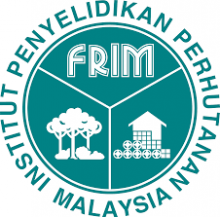
26 Jun 2007
Untuk memberi pendedahan kepada para peserta mengenai peluang perniagaan menerusi penanaman, pemprosesan dan pengeluaran produk herba. (This seminar will inform its participants of business opportunities in herbal products from the production, processing to the final product)

27 Nov 2007
A national conference organized by FRIM and MWPA to introduce the latest R&D findings in forestry and forest products. The theme is "Balancing Economic and Ecological Needs”

25 Jun 2007
Lianas are woody climbers whose important function in the tropical forest ecosystem has long been undervalued. The Forest Research Institute of Malaysia is conducting this course to give participants an opportunity to learn more about lianas in Malaysia, including a field course on the identification and census methods of liana.
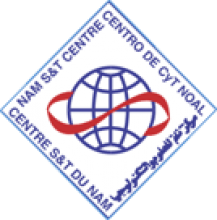
20 Sep 2007
Hanoi, Vietnam - Experts and scientists interested in participating in the Workshop are required to submit their nomination form by 14th August 2007. The selection of the participants will be strictly based on merit and quality of the extended abstracts of the presentation material to be submitted along with the completed Nomination Form.

20 Sep 2007
Institutions and individuals from developing countries are invited to take part in a UN-sponsored international workshop examining successful approaches that address issues related to cities, science and sustainability. The workshop is planned for 20 to 22 September 2007 and will be held in Trieste, Italy.

06 Jun 2007
Selangor, Malaysia - The aim of the conference is to provide engineers, academia and researchers with the opportunity to explore recent development, current practices and future trends in power engineering and optimization techniques.
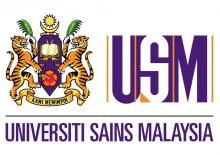
28 Aug 2007
Kelantan, Malaysia - The Third National Workshop on Scientific Writing is purposely
constructed to guide participants to be active and skillful in writing scientific manuscript.

10 Aug 2007
PECIPTA 2007 will showcase the best outcomes, inventions and innovative processes from all public and private institutions of higher learning in Malaysia.
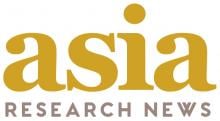
09 Jun 2007
Bangkok, Thailand - Avian influenza and other emerging infectious diseases are of global public health concerns. This workshop will provide a platform for scientists in Thailand and the UK to discuss current issues and establish future research collaborations.

31 May 2007
University of Murdoch, Australia - This seminar will address the Implications of bioterrorism for the BioSciences and Disarmament

11 Jun 2007
KL, Malaysia : The training workshop aims to provide a common background to young scientists already working on forest biodiversity particularly in the Asia Pacific region and will address the urgent needs and challenges of biodiversity and forest genetic resource management in forest production systems.

17 Jul 2007
NSW, Australia - The workshop will give participants the opportunity to discuss their ideas and receive feedback from leading experts in the field, as well as to develop and enhance research networks.

29 Oct 2007
Taipei, Taiwan : The conference will serve as a forum for the exchange of knowledge and experience in forest products research at national and international levels.

14 May 2007
Seoul, Korea: The objective of the Forest Landscape Restoration Conference is to examine the scientific basis for forest landscape restoration and its linkages to practice and policy.

16 Jul 2007
The study tour would visit Kuala Sepetang, Sungai Besar and Putrajaya Wetlands. Kuala Sepetang is well known for its mangrove swamp reserve park. While Putrajaya Wetlands, is believed to be the largest constructed freshwater wetlands in the tropics.

25 May 2007
Though there are over 2000 edible fleshy mushroom species worldwide only about 100 are cultivated. In Malaysia, mushroom has been cultivated since the early 1970s. This forum will provide the platform to discuss within the industry.

23 May 2007
Extensive media coverage on climate change and its devastating impacts in particular has made many Malaysians feel helpless and unsure what to do. The Chevening Alumni is organising this forum to discuss the issue and advise Malaysians on what they can do to reduce their climate impact.

04 May 2007
New Delhi - The 30th ATCM, which is hosted by the Government of India, will take place at the Vigyan Bhavan , India’s Premiere National Conference Centre.

12 May 2007
World Migratory Bird Day (WMBD) is a global initiative devoted to celebrating migratory birds and for promoting their conservation worldwide. This year WMBD will take place on the weekend of 12-13 May and its central theme will be “Migratory birds in a changing climate”.

27 Apr 2007
London - World renowned academics from Keio University and University College London will be presenting the latest advances in neuroscience research in this afternoon symposium. Attendance is free of charge.

21 May 2007
Goa, India - This highly successful 2-day summit addresses issues that make a difference to market players’ growth objectives by bringing together the best minds under one roof.

17 Apr 2007
This conference provides an ideal platform to all involved in agriculture to meet and present their latest research findings, exchange ideas and share experiences on soil science and crop production.

27 Apr 2007
This summit brings together experts and leaders from Indian and Global Life Sciences Industry to identify and debate the emerging opportunities in the Contract Services segment.

24 Apr 2007
As part of a series of activities throughout 2007 exploring the link between Climate Change and security, RUSI will host a one-day conference on Climate Security in Asia on 24 April 2007.

23 Jan 2008
The aim of the Symposium is to stage a forum in which researchers and scientists working in the field of avian influenza can exchange information and experience, which could possibly lead to future research collaborations.

24 Jul 2007
This conference is intended to encourage a wide range of participants to discuss the approaches in integrating biotechnology innovation with business opportunities in an attempt to nurture emerging enterprises and establish a thriving biotech industry.
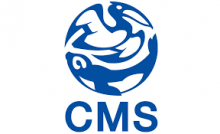
31 May 2007
Paris, France - This international event wil gather veterinarians, medical experts, government officials, scientists and economic decision-makers from countries all over the world touched by the spread of Avian Influenza.

23 Apr 2007
Singapore - ChemCon as such is said to be the world's leading global conference series in the field of chemical control regulation that brings together hundreds of experts.

17 Mar 2007
Delhi, India - This workshop aims to provide a multi-disciplinary glimpse of the various facets of Nanoscience and Nanotechnology targeted towards an audience with a good science/engineering background.
Giants in history
Chinese biochemist Chi Che Wang (1894 - 1979), one of the first Chinese women to study abroad, advanced to prominent research positions at American institutions including the University of Chicago and the Northwestern University Medical School.
Ruby Sakae Hirose (1904 – 1960) was a Japanese-American scientist whose research contributed significantly to our understanding of blood clotting, allergies and cancer.
Chinese electron microscopy specialist Li Fanghua (6 January 1932 – 24 January 2020) facilitated the high-resolution imaging of crystal structures by eliminating interference.
Sálim Moizuddin Abdul Ali (12 November 1896 – 20 June 1987), commonly referred to as the Birdman of India, was the first person to conduct systematic surveys of birds from across India.
Haisako Koyama (1916 – 1997) was a Japanese solar observer whose dedication to recording sunspots – cooler parts of the sun’s surface that appear dark – produced a sunspot record of historic importance.
Michiaki Takahashi (17 February 1928 – 16 December 2013) was a Japanese virologist who developed the first chickenpox vaccine.
Toshiko Yuasa (11 December 1909 – 1 February 1980) was the first Japanese female physicist whose research on radioactivity shed light on beta decay – the process in which an atom emits a beta particle (electron) and turns into a different element.
Angelita Castro Kelly (1942-2015) was the first female Mission Operations Manager (MOM) of NASA. She spearheaded and supervised the Earth Observing System missions during its developmental stage.
Malaysia’s first astrophysicist, Mazlan binti Othman (born 11 December 1951) was instrumental in launching the country’s first microsatellite, and in sending Malaysia’s first astronaut, Sheikh Muszaphar Shukor, into space.
Known as Mr. Natural Rubber, chemist and researcher B. C. Shekhar (17 November 1929 – 6 September 2006) introduced a number of technical innovations that helped put Malaysia’s natural rubber industry on the world map.
Shinichiro Tomonaga (31 March 1906 – 8 July 1979), together with Richard Feynman and Julian Schwinger, was awarded the Nobel Prize in Physics in 1965, for their contributions to advance the field of quantum electrodynamics. Tomonaga was also a strong proponent of peace, who actively campaigned against the proliferation of nuclear weapons and promoted the peaceful use of nuclear energy.
South Korean theoretical physicist Daniel Chonghan Hong (3 March 1956 – 6 July 2002) achieved fame in the public sphere through his research into the physics of popcorn.
Japanese chemist Kenichi Fukui (4 October 1918 – 9 January 1998) was the first Asian scientist to be awarded the Nobel Prize in Chemistry. Together with Roald Hoffman, he received this honour in 1981 for his independent research into the mechanisms of chemical reactions.
Chinese palaeontologist, archaeologist and anthropologist Pei Wenzhong (January 19, 1904 – September 18, 1982) is regarded as a founder of Chinese anthropology.
Physicist Narinder Singh Kapany (31 October 1926 – 4 December 2020) pioneered the use of optical fibres to transmit images, and founded several optical technology companies. Born in Punjab, India, he worked at a local optical instruments factory before moving to London for PhD studies at Imperial College. There, he devised a flexible fibrescope to convey images along bundles of glass fibres.
Japanese physicist Ukichiro Nakaya (1900-1962) made the world’s first artificial snowflakes. He started his research on snow crystals in the early 1930s at Hokkaido University, where there is an unlimited supply of natural snow in winter. By taking over 3,000 photographs, he established a classification of natural snow crystals and described their relationship with weather conditions.
The field of solid-state ionics originated in Europe, but Takehiko Takahashi of Nagoya University in Japan was the first to coin the term ‘solid ionics’ in 1967. ‘Solid-state ionics’ first appeared in 1971 in another of his papers, and was likely a play on ‘solid-state electronics’, another rapidly growing field at the time.
Charles Kuen Kao (Nov. 4, 1933 to Sept. 23, 2018) was an engineer who is regarded as the father of fibre optics. His work in the 1960s on long distance signal transmission using very pure glass fibres revolutionized telecommunications, enabling innovations such as the Internet.
Chika Kuroda (24 March 1884 – 8 November 1968) was a Japanese chemist whose research focussed on the structures of natural pigments.
Motoo Kimura (13 November 1924 – 13 November 1994) was a Japanese theoretical population geneticist who is best remembered for developing the neutral theory of molecular evolution.
Meghnad Saha (6 October 1893 – 16 February 1956) was an Indian astrophysicist best known for formulating the Saha ionization equation which describes the chemical and physical properties of stars.
Sir Jagadish Chandra Bose (30 November 1858 – 23 November 1937) was a scientist and inventor who contributed to a wide range of scientific fields such as physics, botany and biology.
Osamu Shimomura (27 August 1928 – 19 October 2018) was a Japanese organic chemist and marine biologist who dedicated his career to understanding how organisms emitted light.
Subrahmanyan Chandrasekhar (19 October 1910 – 21 August 1995) was an Indian astrophysicist who studied the structure and evolution of stars.
Joo-myung Seok (November 13, 1908 – October 6, 1950) was a Korean butterfly entomologist who made important contributions to the taxonomy of the native butterfly species in Korea.
Mathematician Maryam Mirzakhani (12 May 1977 – 14 July 2017) was the first and only woman and Iranian to date to win the Fields Medal in 2014 for her work on curved surfaces.
Sir Chandrasekhara Venkata Raman (7 November 1888 – 21 November 1970) was an Indian physicist who performed ground-breaking research in the field of light-scattering.
Mohammad Abdus Salam (29 January 1926 – 21 November 1996) was a theoretical physicist and the first Pakistani to receive a Nobel Prize in science.
Srinivasa Ramanujan (22 December 1887 – 26 April 1920) was a math prodigy and widely considered one of India’s greatest mathematicians. Despite having almost no formal training in mathematics, he made substantial contributions to mathematical analysis, number theory, infinite series and continued fractions.
Gopalasamudram Narayanan Ramachandran (8 October 1922 – 7 April 2001) is best known for developing the Ramachandran plot to understand the structure of short chains of amino acids, known as peptides.
Hitoshi Kihara (1893 – 1986) was one of the most famous Japanese geneticists of the 20th century. One of his most significant contributions was identifying sex chromosomes (X and Y) in flowering plants.
Chien-Shiung Wu (31 May 1912 – 16 February 1997) was an experimental physicist who made several important contributions to nuclear physics. Wu worked on the Manhattan Project – a top-secret program for the production of nuclear weapons during World War II and helped to develop a process for separating uranium into U235 and U238.
Meemann Chang (born 17 April 1936) is a Chinese palaeontologist who studied the fossils of ancient fish to understand the evolution of life. By examining fossils, she uncovered new insights on how vertebrates, animals with a backbone, migrated from the sea and became adapted to live on land.
Bibha Chowdhuri (1913 – 2 June 1991) was an Indian physicist who researched on particle physics and cosmic rays. In 1936, she was the only female to complete a M.Sc. degree at the University of Calcutta.
Lin Lanying (7 February 1918 – 4 March 2003) was a Chinese material engineer remembered for her contributions to the field of semiconductor and aerospace materials. Lanying was born into a family who did not believe in educating girls and she was not allowed to go to school.
Japanese geochemist Katsuko Saruhashi developed the first method and tools for measuring carbon dioxide in seawater



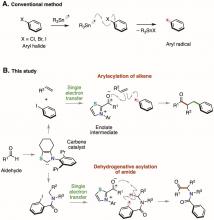
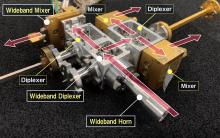

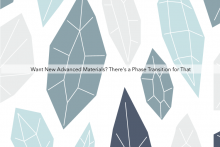
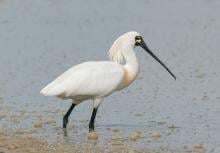
![Selective Synthesis of Cyclo[9]pyrroles Based on an Oxidative Coupling](https://www.asiaresearchnews.com/sites/default/files/styles/medium/public/articles_images/image1_7.jpg?itok=JpWY_x68)
